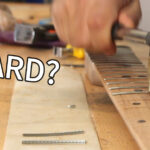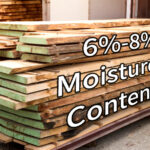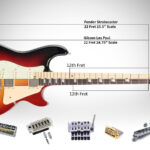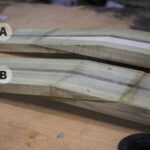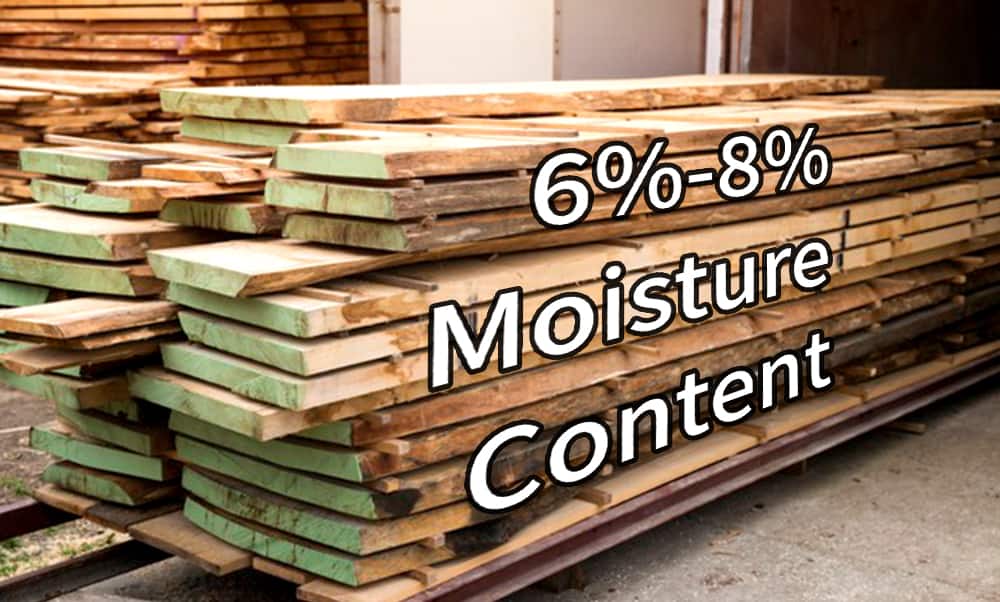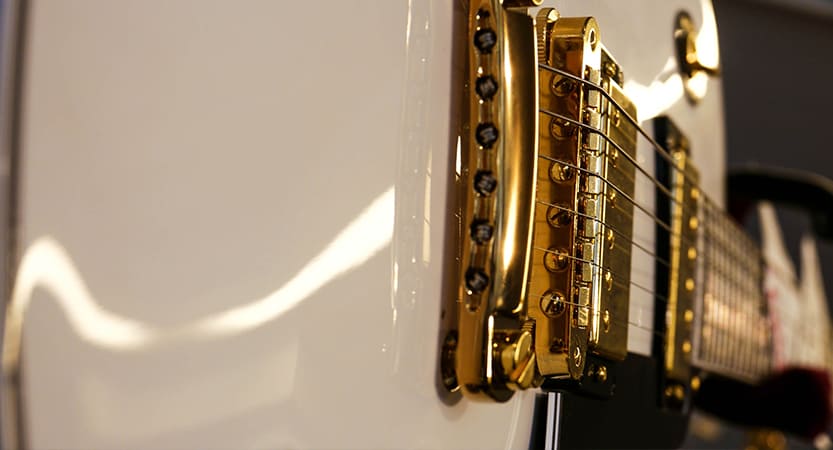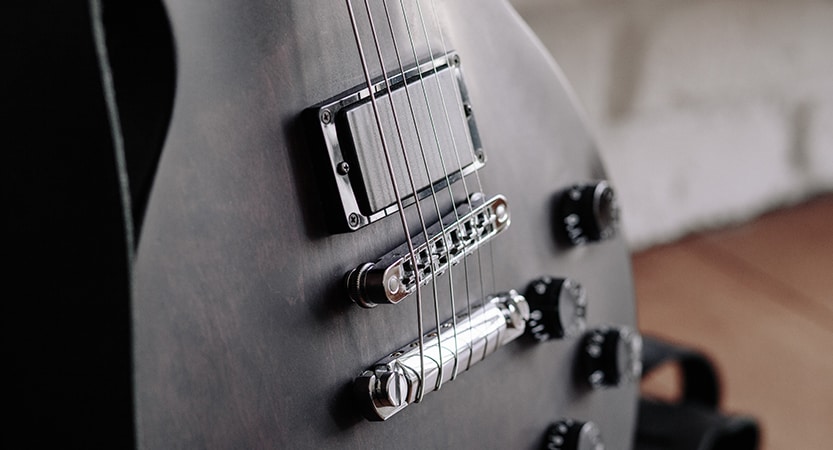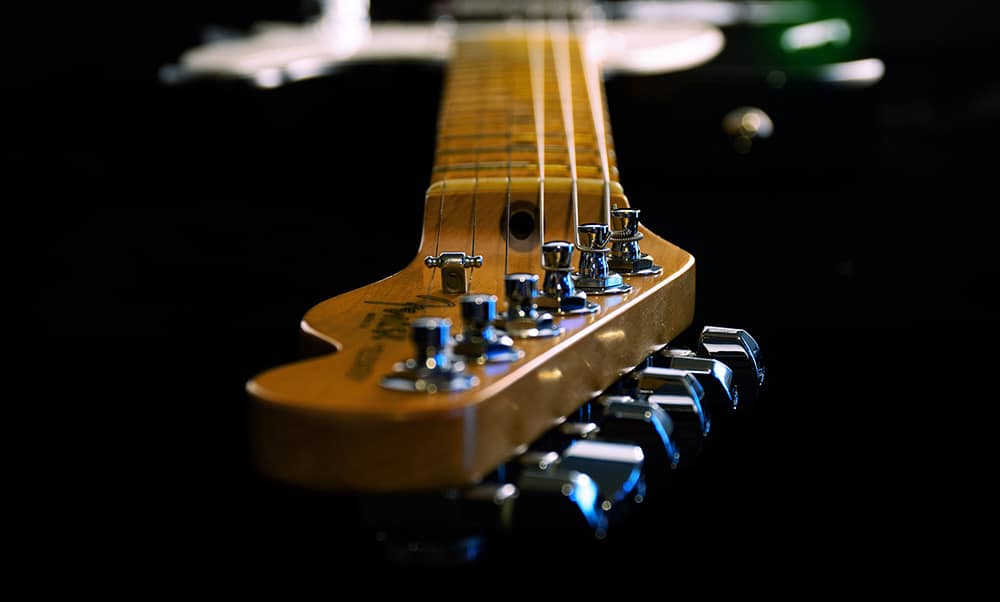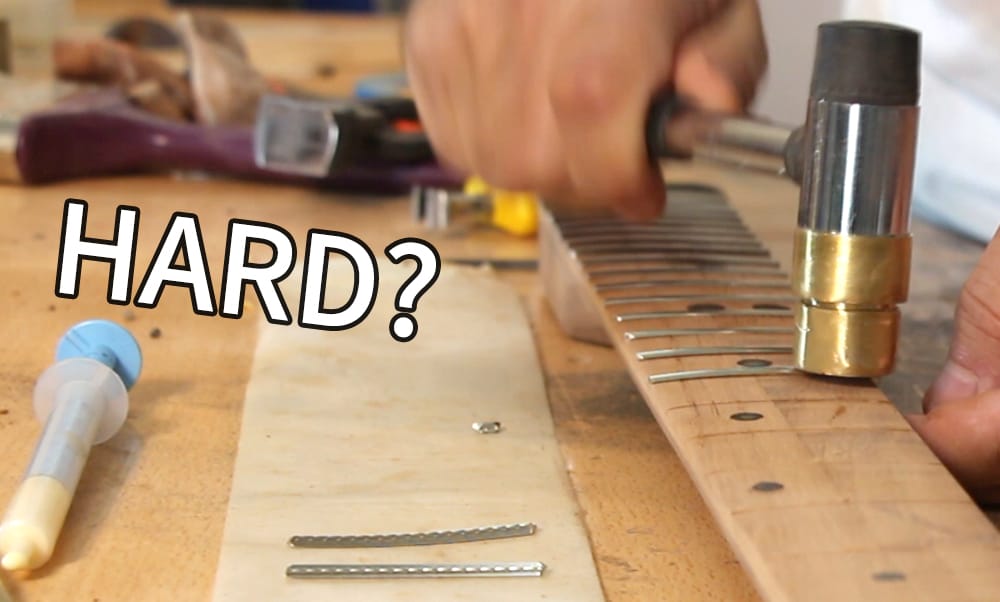If you have found that beautiful piece of wood that you want for your next guitar, but it is either ‘green’ or comes from an unclear source, you want to make sure it is dry enough before you start working on it. Wood tends to shrink and deform from when it is cut down to when it is fully dry or reaches its final moisture content. This is true for most woods used for indoor carpentry and even more so for musical instruments.
How dry should guitar wood be?
The general consensus is that you want the wood to reach the moisture content of the environment it is in. In most modern homes this would mean 6-9%. The main advantage of wood with this moisture content is that it will not deform or change shape when the instrument is built.
To better understand the process and principles of drying the wood we’ll take a deep dive into kilns, de-humidifiers, and humidity.
How long does it take for wood to dry naturally?
For wood to dry naturally it needs to have certain conditions, and even then it could take years, The rule of thumb for timber is that it will dry about 1” or 2.5cm a year. So if you have a 2” slab of wood, it will need at least two years to dry. The minimal conditions for that to occur are that I would be in a dry and ventilated area. This can be either indoors or outdoors but will require shelter from the rain, if outside, and proper airflow if indoors.
Humidity and moisture content:
‘Relative humidity’ which we are used to when talking about the weather, is not the same as the ‘Moisture Content’ we measure in lumber. 6-9% ‘Moisture Content’ is comparable to 30-40% ‘Relative Humidity’. This is also what most modern homes will have. If you live in an especially humid or a dry area like a dessert, take that into account.
How do you air dry wood at home?
One of the limitations of drying wood is often the size. Fortunately for guitar builders, you can cut the timber to more manageable pieces. The other must-have conditions are that the area is dry. This just means that is should not be in a damp basement, or exposed to any other source of humidity. Most homes, with heating in the winter and air conditioning in the summer, will tend to be fairly dry. The third condition seems obvious but is really essential to drying in general and to the evenness of the drying process.

What are the benefits of dry wood for a guitar?
Drying the wood to its final moisture content has many benefits, which most carpentry work will benefit from, but are detrimental to a guitar. This is true to the body but even more so to the neck
Improved stability
Probably the number one reason to use well-dried wood is that it will not deform. A bent neck or worse, a twisted neck, can easily make a guitar unplayable and useless. A well-dried and settled wood will not only have finished deforming by itself but will also be less susceptible to deformation if exposed to different external and environmental conditions. This will include better withstanding seasonal weather changes as well as travel.
Dry wood is stronger
Adjusting tuning is one thing, but you do not want to need truss-rod adjustments on a regular basis. Natural ‘green’ wood is relatively flexible and will probably easily bend under the pressure of the strings. The drying process removes some of that flexibility and makes it a more rigid material. If you are working with hand tools, there is a point where it may be too dry and be harder to work with.
If you plan on steam bending any part of your guitar (mostly for hollow or semi-hollow guitars) you will actually prefer air dried wood. Over-drying wood may lose some of its flexibility and will break more easily. Kiln dried wood is also no favorable (Pun intended) for Barbeque or smoking food.
Dry wood sounds better
This is very intuitive if you just think of it and can be realized with the simplest tapping test. ‘Green’ wood tends to sound a bit muddy and muted. The dryer is the more acoustic properties it will have. Without getting into the whole tone-wood issue, this is probably not as critical for electric and solid body guitars as much as it affects acoustic and semi-hollow guitars but does certainly affect the sustain and the way vibrations are carried through the neck and body.
Reduces the weight
More players, as well as manufacturers are paying attention to guitar ergonomics and the weight of guitars. Vintage Les Paul’s have been notorious for their back breaking weight, to the point where Gibson have introduced weight relief in many models. Taking weight off your guitar is certainly an added value. Common woods used for guitar building, such as Ash and maple can lose between 20 and 40% of their weight when drying.
Avoid insect and mold damage
Mold and fungi thrive in damp and humid conditions. Drying the wood will eliminate existing molds and prevent more from appearing. In kiln drying where higher heat is also introduced, an insect that may be in the wood or have laid eggs will be eliminated. Since the wormholes will either be cut or filled, this will stop the issue.
There are two main methods to drying wood for guitar making and general carpentry: Airdrying and a Kiln
Airdrying your wood
Airdrying is simply giving nature optimal conditions to take its course, while eliminating natural elements which can ruin or otherwise change the wood in ways we do not wish. Wood will naturally loose its moisture to the environment and giving a dry space and good airflow will do most of the work.

Making the most of airdrying your wood
To optimize drying conditions there a guideline to follow:
- Stack the wood using the ‘Stack and sticker’ method. Make sure you have a flat and steady base that allows airflow.
- Put the supporting sticks close to the end and in 18-24” spaces.
- Cut and align all the boards so match in length and have a ‘clean’ end with no checks or cracks.
- Wax, use Anchor Grain End Sealer or other sealers. The ends tend to dry and shrink faster and therefore may crack, putting the stickers close to the end also helps.
- If outside, make sure to cover it and protect it from direct sunlight.
- Add a fan (or fans), to maintain constant circulation
- If indoors, or a small confined space, use a home de-humidifier
- Use a moisture meter to monitor the drying process
The limitation of airdrying
The obvious limitation is time. Using stock of 1.5”-2” may require 2 years to get you material even close to where you want it.
Airdrying will only take you so far and in most weather conditions you will only be able to remove the humidity from the wood to 12-20%. These are the water molecules that are ‘trapped’ in the wood and which will be released to try and reach equilibrium with the environment. In order to reach 6-9%, you will need to introduce heat to ‘persuade’ the wood to chemically give up some more of the water it has within him. The process will involve causing some crystallization of the resin in the wood itself while extracting more moisture. A dehumidifier will also help.
Using a Kiln
Most Kilns will have three main components: Dehumidifier, Fan and heater
The combination of heat, dryness and good air circulation can shorten drying time significantly, and reach final moisture content as low as 6-8% moisture
Commercial Kiln temperature can run at 38-48 Celsius (100F -120F) and up to 65C (150f) for sterilizing.
With these conditions, a 2” stock can take a week or two for relatively softer wood like Poplar and up to 4 weeks for oak and harder woods.
Faster Drying is not always better
Taking ‘green’ wood and kiln drying it from what may be 80% moisture content to 6% in a few weeks, may lead to more cracking. The result may also be very stiff but brittle material.

What is the fastest way to dry wood for woodworking or guitar building?
Since we want to use wood at 6-8%, using a Kiln is standard practice in the guitar industry. Many timber yards sell kilned timber, so that may solve the problem as well.
It seems the safest way would be airdrying the wood to a reasonably low percentage and then kiln drying it to perfection
** Some Luthiers may have very strong opinions and methods as to which drying technique will yield the best results. According to my research and experience these are the more common practices for both carpentry and building electric guitars.

